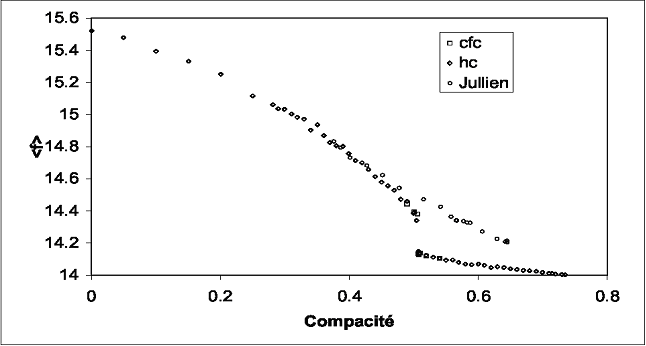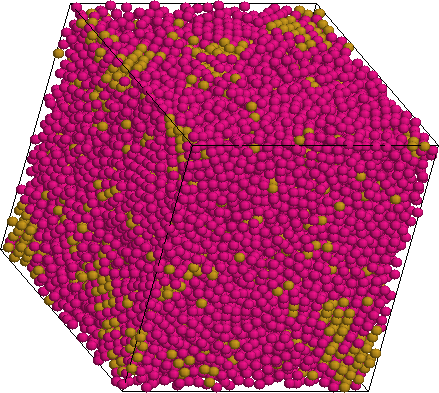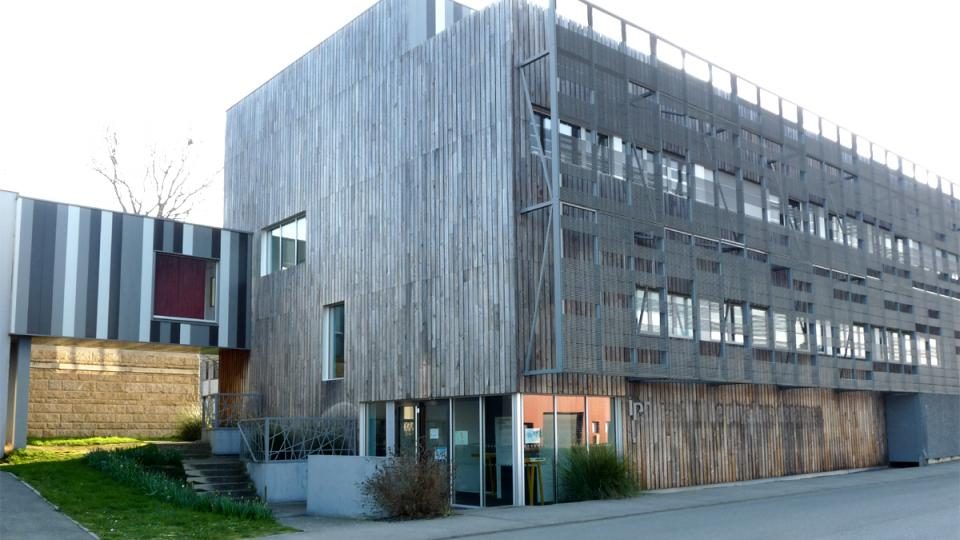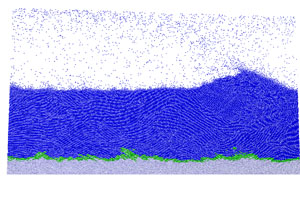Granular media real 2D and 3D show the characteristic of being difficult to analyze in terms of contacts between grains because it is often imprecise (contact time is not even a numerical point of view). These neighborhood problems can be solved by our programs Voronoi tessellation For many years we have developed algorithms to analyze the spatial geometry of stacks of grain in two dimensions. We can completely paved space by polygons whose sides are defined by the radical axis between two neighboring grains.This paving is unique and each polygon contains only one grain. All the topological and metric properties of these structures has been analyzed in two dimensions. We recently extended this study to three dimensions.
This achievement enables us to study the topological and metric properties of granular media « real » and the 3D foam. The achievement of homogeneous stacks in three dimensions application to take into account a number of considerations such as steric effects or exclusion, the periodic conditions and more generally the history of the development (individually or collectively). We studied beaches compact easily achievable according to the numerical methods used. Algorithms Poisson, RSA (Random Sequential Adsorption), Powell and de Visscher and Bölsterli place a sphere after another permanently; algorithm Jodrey and Tory or modified by Jullien allows densification by rearrangement almost static and collectively. SPH algorithms, PIC, MD and ED are dynamic and take into account interactions between the spheres collisionnelles. We can scan the whole range of porosity (0 to 0.7405).
As a first step, we analyzed the properties of disordered stacks of spheres monotailles. We confirmed the validation of three-dimensional relationships Aboav-Weaire on average faces of the cells. To find the maximum possible stacks of our disorderly, we analyzed the structures slightly disturbed crystalline stacks of classics (in Faces Centered Cubic and Hexagonal Compact). A weak disorder (about 0.1%) in the structure increased the average number of neighbors of 12 to 14 directly.
We analyzed the dependencies of the distributions of numbers of faces and neighbors in terms of compactness of the pile. To do this, we had to generate different types of stacks (different « stories »), such as RSA (C = 0 to 30%), « dense packing » type or Powell and Bölsterli Visscher (C = 60-64%), Dynamics Molecular & Event-Driven (C = 0 to 60%) or Jullien (C = 40 to 64%). We have seen that this could influence some geometric parameters such as average number of faces and its distribution.This has the advantage of power used as criteria of disorder or order from existing stacks (by measuring the difference in solving random type RSA).Our models have been extended to cases where the binary and polydisperse. Figure 13 shows a difference of behavior for compactness greater than or less than 0.5 and according to the original configuration of the pile. The spheres of stacks originating with a CFC or HC have suffered a « thermal agitation » Event-Driven Model. This gave them a disorderly character for small compact car similar to the results obtained from the stacks type Jullien. As against over 0.5, the order inherent in the original structure is partially preserved and thus affects the outcome.

Figure: Evolution of average number of faces of Voronoi cells based on compactness. The initial (before reduction of the radii and agitation) are stacks of face-Centered Cubic (FCC) Hexagonal Compact (HC) or disordered (Jullien).
We then sought to understand how moving a stack initially disordered when subjected to thermal agitation. To do this we analyzed the importance of an order parameter (Q 6) which takes into account the spatial orientation of the various links connecting the sphere to its neighbors as defined by the Voronoi cell, we have also highlighted the evolution of the phase transitions between disordered (C <49.5%), a transition zone (49.5%
As the dominant structure is the CFC, we felt it appropriate to apply the basic principles of percolation to see how this structure evolved during the crystallization. So we followed the emergence and growth of CFC cell clusters at stirring of a disordered stacking of spheres initially monotailles compactness with more than 0545. As expected, there appeared a large number of mini cells CFCs that are organized to create a cluster of percolation through the entire structure.

(a)

(b)
Figure: Crystallisation of a disordered stacking of spheres monotailles (a) subject to a uniform thermal agitation after 10 binary collisions 9 (b). The colors represent the areas being quasi-crystalline environment.
It is very easy to study numerically the three-dimensional stacks of objects but it is much more difficult to carry out similar studies experimentally. Few practical techniques used to obtain information experimental studies on the surface, measurements tomography, magnetic resonance imaging, liquid iso-index without being destructive. The most conventional is to practice cutting, serial or random 3D structure in order to obtain relevant information. We therefore sought to verify that it was the reliability of certain interpretations of measurements made on a cut based on the true three-dimensional measurement. Thus we compared the results of conventional 2D Voronoi tessellations and 3D obtained from a 3D stack cut by a plane or from a cut made in the 3D tessellation of the original structure.


Figure: 2D Voronoi tessellations obtained from a 3D stack cut by a plane and a cut made in the 2D tessellation 3D initial structure.



